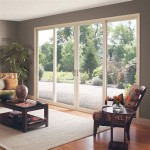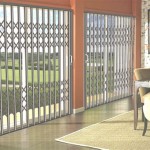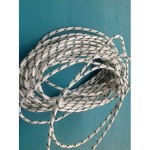```html
Great Patio Ideas: Creating Your Outdoor Oasis
A patio serves as an extension of the home, offering a space for relaxation, entertainment, and connection with the outdoors. Designing a patio involves careful consideration of various factors, including space availability, budget, desired functionality, and aesthetic preferences. The following provides numerous patio ideas to inspire homeowners in creating their ideal outdoor living space.
Defining the Space: Layout and Structure
The initial step in designing a patio involves defining its layout and structure. This includes determining the patio's size and shape, as well as considering any structural elements that will be incorporated. Several layout options exist, each with its own advantages.
A rectangular patio is a classic and versatile choice, suitable for various furniture arrangements. It is particularly well-suited for smaller spaces or patios adjacent to the house. A square patio offers a similar aesthetic to a rectangular one but is often preferred for symmetrical gardens or standalone spaces.
Circular patios create a more intimate and flowing atmosphere. They work well as focal points in a garden or as a dedicated seating area. Irregular shapes, while more challenging to design, allow for greater creativity and can adapt to the natural contours of the landscape. These shapes are optimal for homeowners looking for a truly unique patio.
Structural elements can significantly enhance the functionality and aesthetics of a patio. Pergolas, for example, provide partial shade and create a defined outdoor room. They also offer a frame for climbing plants, adding a touch of natural beauty. Gazebos, on the other hand, offer complete shelter from the elements and create a more formal and enclosed space. Trellises can be used to create privacy screens or to support climbing plants, adding vertical interest to the patio.
The choice of materials for the patio surface is also crucial. Concrete is a durable and cost-effective option, and it can be stamped or stained to mimic the look of more expensive materials. Pavers offer a wide range of colors, shapes, and textures, allowing for customized designs. Natural stone, such as flagstone or slate, provides a rustic and elegant look, though it tends to be more expensive. Gravel is a budget-friendly and permeable option that is easy to install, but it may require more maintenance to keep it weed-free.
Furnishing and Decorating for Comfort and Style
Once the patio's layout and structure have been established, the next step is to furnish and decorate the space to create a comfortable and stylish outdoor living area. The selection of furniture should be based on the patio's intended use, the available space, and personal preferences.
For dining patios, a table and chairs are essential. Consider the size of the table based on the number of people you typically entertain. Choose chairs that are comfortable and durable, and consider adding cushions for extra comfort. Outdoor lounges, on the other hand, require comfortable seating options, such as sofas, armchairs, and ottomans. Choose furniture made from weather-resistant materials, such as wicker, aluminum, or teak.
Accessorizing the patio with cushions, throws, and rugs adds color, texture, and comfort. Choose fabrics that are designed for outdoor use and are resistant to fading and mildew. Outdoor lighting is essential for creating ambiance and extending the use of the patio into the evening. String lights, lanterns, and spotlights can be used to create a warm and inviting atmosphere. Consider using solar-powered lights to save energy.
Adding plants to the patio brings life and color to the space. Potted plants are a versatile option that can be easily moved around, allowing for flexibility in design. Consider using a variety of plants with different textures, colors, and heights to create visual interest. Hanging baskets are also a great way to add greenery to the patio, especially in smaller spaces. A small herb garden can provide fresh herbs for cooking and add a fragrant element to the patio.
Other decorative elements, such as sculptures, fountains, and wind chimes, can add personality and character to the patio. Choose items that reflect your personal style and complement the overall design of the space. A fire pit or outdoor fireplace can create a focal point and provide warmth on cool evenings. Consider the safety regulations in your area before installing a fire pit or fireplace.
Enhancing Functionality and Privacy
Enhancing the functionality and privacy of a patio can significantly improve its usability and enjoyment. Several strategies can be employed to achieve these goals, tailored to individual needs and preferences.
Outdoor kitchens are a popular option for those who enjoy cooking and entertaining outdoors. A basic outdoor kitchen may include a grill, a countertop, and some storage space. More elaborate outdoor kitchens may include a sink, a refrigerator, and even a pizza oven. An outdoor bar can be a great addition for those who enjoy entertaining guests. A bar can be as simple as a countertop with some stools or as elaborate as a fully equipped bar with a sink, a refrigerator, and a beer dispenser.
Privacy screens are essential for creating a more secluded and intimate patio space. Fences and walls are the most traditional options for creating privacy, but they can also make the patio feel enclosed. Trellises with climbing plants are a more visually appealing option that provides some privacy while still allowing for airflow. Curtains and screens made from weather-resistant materials can be used to create a temporary privacy screen.
Shade structures are essential for protecting the patio from the sun and rain. Umbrellas are a portable and affordable option that can be easily moved around as needed. Awnings provide more permanent shade and can be retracted when not needed. Pergolas offer partial shade and create a defined outdoor room. Consider the orientation of the patio and the amount of sunlight it receives when choosing a shade structure. The strategic placement of trees and shrubs can also provide natural shade.
Consider incorporating outdoor storage solutions to keep the patio clutter-free. Storage benches provide seating and storage space in one convenient unit. Outdoor cabinets can be used to store gardening tools, cushions, and other items. Deck boxes are a weatherproof option for storing larger items, such as lawn furniture cushions. Utilizing vertical space with shelves or wall-mounted storage can also maximize space utilization on a smaller patio.
Implementing insect control measures ensures enjoyable outdoor experiences. Citronella candles and torches can help repel mosquitoes. Consider installing screens on windows and doors to prevent insects from entering the home. Bug zappers can be effective in controlling flying insects, but they may also attract beneficial insects. Planting insect-repelling plants, such as lavender, rosemary, and basil, can help keep pests away naturally.
```
75 Patio Ideas You Ll Love November 2024 Houzz

50 Patio Ideas For The Backyard Of Your Dreams

60 Best Backyard Patio Ideas 2024

50 Best Patio Design Ideas For Outdoor And Backyard In 2024 Foyr

25 Great Stone Patio Ideas

20 Best Patio Cover Ideas Covered Designs

Best Outdoor Patio Decor Ideas Forbes Home

5 Cool Patio Ideas Lot Lines

9 Small Patio Designs With Big Impact Romanstone Hardscapes

Best Patio Design Ideas For Your Home Designcafe








